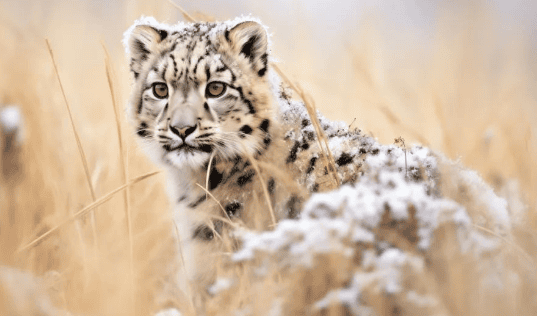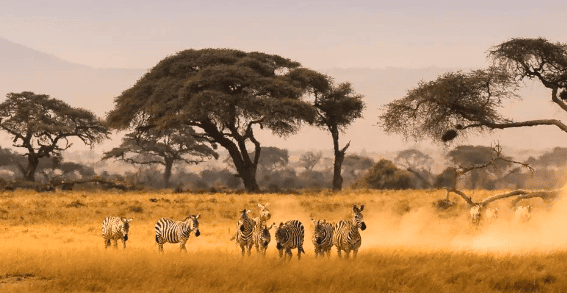Whenever an earthquake occurs, there will always be a lot of news about "animals repaying kindness" and "animal saviors" on the Internet. In fact, the seismological and zoological circles have long reached a consensus that animals cannot predict earthquakes.
From the perspective of animal behavior, certain individuals, such as dogs or cats who bring mice to their owners, may be driven by animal instincts and do things that appear to be "protecting their owners." "Protecting humanity" behavior. In fact, these situations all have their own logic of animal behavior and are not suitable for excessive explanation.

In recent years, thanks to the attention of the country and the international community, wildlife protection has gradually entered the public eye. With the rise of online media and social platforms, many animal images such as giant pandas, takin, rabbits, snow leopards, and wild elephants have become “traffic stars” and have received a large number of attention and comments from netizens.
However, we often see some opinions and opinions that deviate from the facts and understand animals based on human needs and emotions.
For example, some well-known "popular science" literary works emphasize that animals are "spiritual" and "human-friendly" and describe anthropomorphic emotions, hoping to "awaken human conscience and stop slaughtering these animals." ; In the past few years, there were widely circulated "environmental protection" articles that interpreted some wild animal deaths as animals actively "suicide" in the deteriorating natural environment; in addition, naming giant pandas was given to humans to a certain extent. Emotions, clothing and shoes for pets are not actually what pets need, but are imposed on pets by human beings' own ideas and so on.
Some people may think that the starting point of such public opinion is good, and it can also promote society's attention to and improvement of the welfare and fate of wild animals, which is understandable.
But are there any potential problems with doing this? When a wrong argument serves the right original intention, how should we view this "magic defeats magic" that some people talk about?
I believe that there are many ways and paths to accomplish something meaningful, but not all methods are correct and not all paths are feasible. Approaching the right goal in the wrong way is likely to be a mistake and will not ultimately achieve the goal. We should not promote environmental protection and wildlife protection in this way.
Why human emotions and needs should not be included

Projected onto animals?
① First of all, the care shown by this kind of thinking is often far from the actual needs of animals, and may not be beneficial to wild animals.
For example, as large carnivores that live alone in the wild, individual captive cubs of giant pandas were separated from their mothers when they reached the right age. They were misunderstood on the Internet as "forcibly separated", and some members of the public asked the breeding institutions to do so. To "reunite mother and child", this is obviously contrary to the natural habits of giant pandas.
In addition, the normal body shape of elderly giant pandas is said to be "malnourished", while necessary and ethical physical examinations are interpreted to mean that giant pandas are "suffering abuse". These "concerns" have no benefit other than bringing negative work pressure to the breeding institutions.
Previously, the giant panda "Bao Quan" was so skinny that it attracted widespread attention. Subsequently, the China Giant Panda Conservation and Research Center responded that the panda had less hair and was thinner, weighed within the normal range, and had no health problems. Image source: Internet screenshot
② Secondly, even if such public opinion ultimately advocates the correct approach, its meaning is very limited, and the side effects are very obvious.
Using human thinking and emotions to understand animals is essentially an anthropocentric thinking. Emotional projection may promote the protection of some wild animals, but it can also hinder the survival of wild animals and even human beings' own interests.
For example, domestic cats are widely loved companion animals, but many breeders believe that a free-range life where they can roam freely outdoors is in line with the welfare of domestic cats. If domestic cats are kept loose based solely on "fast food" emotional projection, then domestic cats will cause uncontrollable indiscriminate killing of local native species and subsequent population decline, and will also be exposed to various pathogens that threaten themselves. and other safety hazards, and even promote the spread of diseases between humans, pets, and wild animals, causing endless harm.
When people who love anthropomorphic animals find that what they like is not "cute" or "spiritual" and even participate in cruel competition for survival, how to put this misplaced love? On the other hand, emotional projection can be either positive or negative. Animals such as snakes and spiders are important parts of the ecosystem. However, traditional cultural impressions such as "cold-blooded" and "vicious" often cause social platforms to avoid relevant popular science propaganda content for fear of being disgusted by the audience. How can this help protect the complete biodiversity and ecological environment?

 扫一扫微信交流
扫一扫微信交流
发布评论